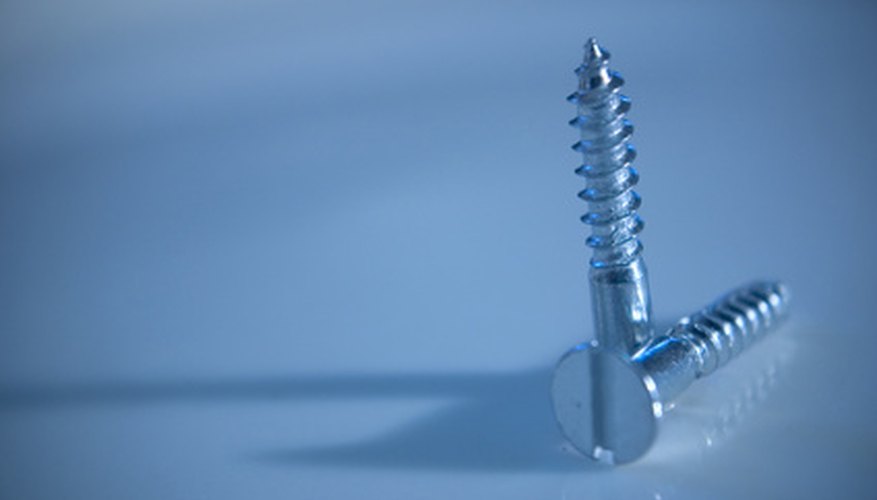If you want to buy wood screws to match the ones you have, you'll need to know the gauge and length. You can calculate both by measuring the screws, though you'll need to use a chart to convert centimetres to gauge. When you need to drill pilot holes for the screws, you can measure the root and shank to choose the optimum drill sizes. Traditional tapered wood screws come in a variety of head styles and drives, such as flathead, round-head, Phillips or slotted, but all can be measured using the same rules.
- If you want to buy wood screws to match the ones you have, you'll need to know the gauge and length.
Measure the length of the screw by starting at the widest point of the head and measuring to the tip. This means that the length of a flathead screw includes the head, but the length of a round-head screw does not.
Measure the shank of the screw by laying the screw across a finely marked ruler and sighting down to judge the diameter of the area without threads. Convert the number to a decimal by dividing the upper number of the fraction by the lower number. For example, 2.08 mm works out as 3/32 in inches. This is 3 divided by 32, or .09375. Use a conversion chart(see Resources) to convert the shank diameter to the screw gauge or "number." Round the shank measurement to the nearest diameter in the chart if it doesn't match exactly. When you purchase screws, you'll need to specify the gauge and the length.
Measure the root diameter of the screw by measuring across the middle of the threaded section. Note the diameter of the central shank, not including the threads. Choose a drill the same size as the root diameter when you want to drill a pilot hole for a wood screw. Drill the pilot hole the full length of the screw in hardwood or a little less in softwood. Then choose a drill the same diameter as the shank and widen the upper part of the pilot hole to accommodate the unthreaded shank.
